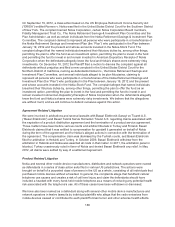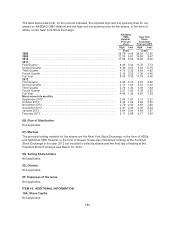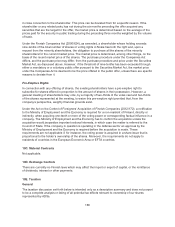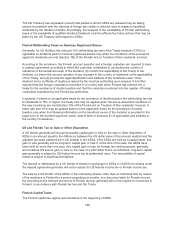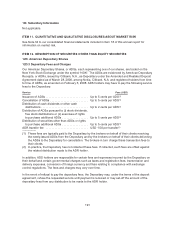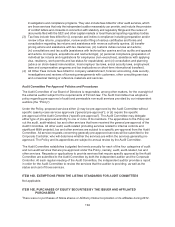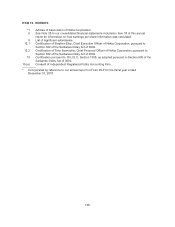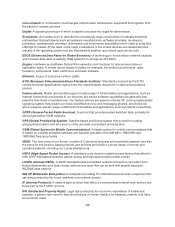Nokia 2012 Annual Report Download - page 189
Download and view the complete annual report
Please find page 189 of the 2012 Nokia annual report below. You can navigate through the pages in the report by either clicking on the pages listed below, or by using the keyword search tool below to find specific information within the annual report.shares), regardless of whether the payment is in fact converted into US dollars. Generally, any gain or
loss resulting from currency exchange rate fluctuations during the period between the time such
payment is received and the date the dividend payment is converted into US dollars will be treated as
US source ordinary income or loss to a US Holder.
Special rules govern and specific elections are available to accrual method taxpayers to determine the
US dollar amount includible in income in the case of a dividend paid (and taxes withheld) in foreign
currency. Accrual basis taxpayers are urged to consult their own tax advisors regarding the
requirements and elections applicable in this regard.
Under the Finnish Income Tax Act and Act on Taxation of Non-residents’ Income, non-residents of
Finland are generally subject to a withholding tax at a rate of 30% payable on dividends paid by a
Finnish resident company. However, pursuant to the Treaty, dividends paid to US Holders generally
will be subject to Finnish withholding tax at a reduced rate of 15% of the gross amount of the dividend.
Qualifying pension funds are, however, pursuant to the Treaty exempt from Finnish withholding tax.
See also “Finnish Withholding Taxes on Nominee Registered Shares” below.
Subject to conditions and limitations, Finnish income taxes withheld will be treated as foreign taxes
eligible for credit against a US Holder’s US federal income tax liability. Dividends received generally will
constitute foreign source “passive category income” for foreign tax credit purposes. In lieu of a credit, a
US Holder may elect to deduct all of its foreign taxes provided the deduction is claimed for all of the
foreign taxes paid by the US Holder in a particular year. A deduction does not reduce US tax on a
dollar-for-dollar basis like a tax credit. The deduction, however, is not subject to the limitations
applicable to foreign tax credits.
Provided that certain holding period and other requirements are met, certain US Holders (including
individuals and some trusts and estates) are eligible for reduced rates of US federal income tax at a
maximum rate of 15% in respect of “qualified dividend income” received in taxable years beginning
before January 1, 2013; in respect of such income received in taxable years beginning after
December 31, 2012, the maximum rate is 20%. Dividends that Nokia pays with respect to its shares
and ADSs generally will be qualified dividend income if Nokia was not, in the year prior to the year in
which the dividend was paid, and is not, in the year in which the dividend is paid, a passive foreign
investment company (a “PFIC”). Nokia currently believes that dividends paid with respect to its shares
and ADSs will constitute qualified dividend income for US federal income tax purposes, however, this
is a factual matter and is subject to change. Nokia anticipates that its dividends will be reported as
qualified dividends on Forms 1099-DIV delivered to US Holders. US Holders of shares or ADSs are
urged to consult their own tax advisors regarding the availability to them of the reduced dividend tax
rate in light of their own particular situation and the computations of their foreign tax credit limitation
with respect to any qualified dividends paid to them, as applicable.
We believe that we should not be classified as a PFIC for US federal income tax purposes for the
taxable year ended December 31, 2012 and we do not expect to become a PFIC in the foreseeable
future. US Holders are advised, however, that this conclusion is a factual determination that must be
made annually and thus may be subject to change. If we were to be classified as a PFIC, the tax on
distributions on our shares or ADSs and on any gains realized upon the disposition of our shares or
ADSs may be less favorable than as described herein. Dividends paid by a PFIC are not “qualified
dividend income” and are not eligible for reduced rates of taxation. In addition, US persons that are
shareholders in a PFIC generally will be required to file an annual report disclosing the ownership of
such shares and certain other information as yet to be determined. US Holders should consult their
own tax advisors regarding the application of the PFIC rules (including the new reporting requirements)
to their ownership of our shares or ADSs.
188




